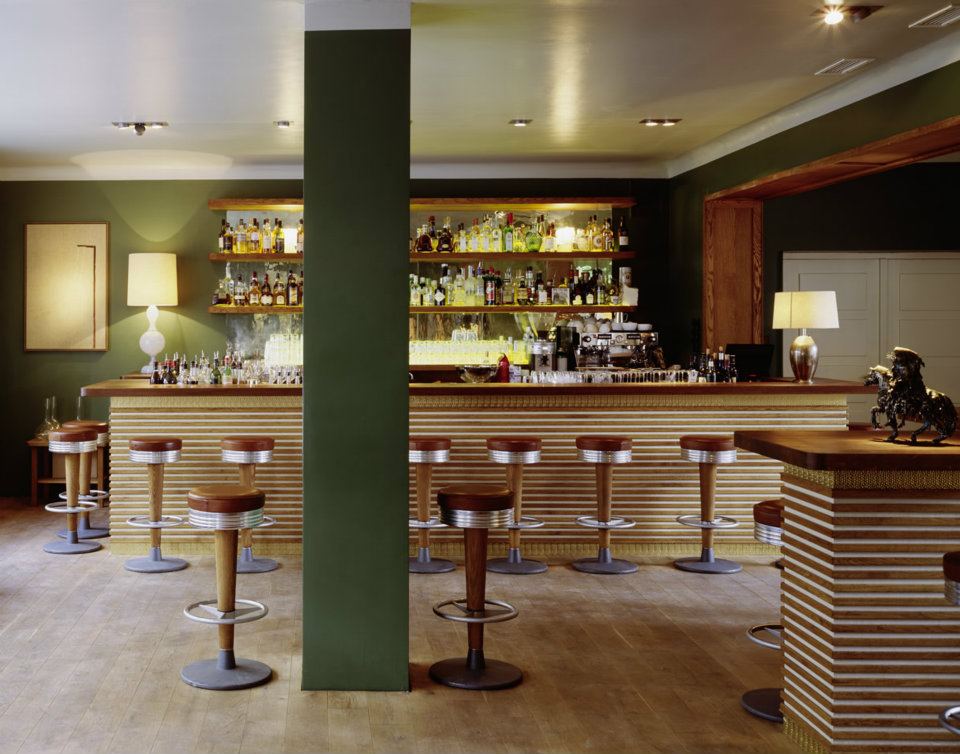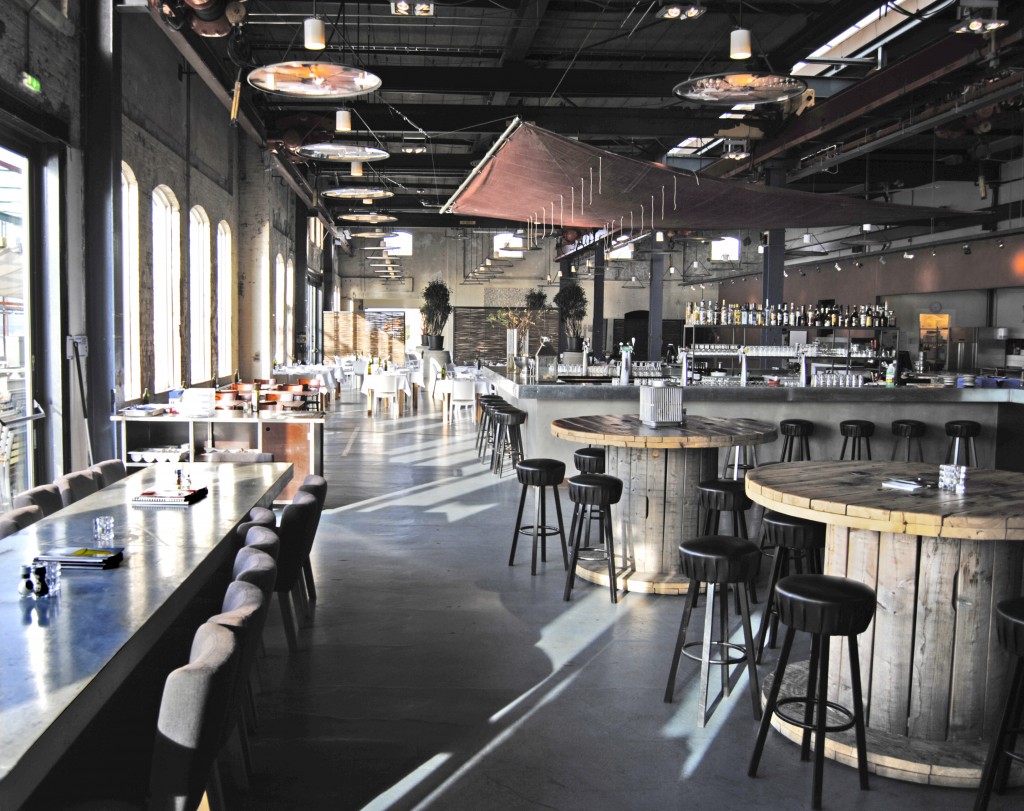The Restaurant Formerly Known As...
Berlin's immense new restaurant Pauly Saal has all the grandness of a historical fortification, without the austerity. That's because the building, originally constructed in 1928, used to be a Jewish girls' school. Its handsomely refined decor, combined with a stellar palate-pleasing menu, makes for the kind of school reform we're completely in favor of.
The global trend of morphing old derelict structures into modern hot spots is a visible enough one our side of the Atlantic too, but Europe's got us beat in the history-mining department. Whether it's the venue itself or its surrounding buildings, the juxtaposition of the various centuries through this architectural blend of old-meets-new is simply more striking.
Another example, the newly opened Stork Restaurant, inhabits a portion of a former industrial complex on Amsterdam's northern waterfront that's undergoing a major return to form by way of new shops, eateries, and start-up businesses. Pieter van der Pot of CUBE Architecten and Marloes van Heteren of SOLUZ Architecten, who were commisioned to redevelop the entire 30,000-square-meter area, set their sights on completing Stork first, maintaining the basic premise that all it takes is one buzzy new eatery to forge the path to a hot new destination. And as Europe's largest seafood restaurant, it's been hard to overlook.
With the exception of expanding the windows to allow for more natural light, the team maintained much of Stork's original structure, both inside and out, while design firm Interior Shock utilized old factory components like cable reels and fixtures for the decor.
Scroll down for visuals and more on both these awesome dinner destinations.

Before Pauly Saal opened its doors in February, this former school, host to the 2006 Berlin Biennale, had stood vacant for much of the last half of the 1900s.

Owners Stephan Landwehr and Boris Radczun brought a dignified and understated look to the space, seen here in the dining room with its green velvet seating and Murano chandeliers hanging above. But there are distinctly modern-day elements of surprise too, like the red and white rocket, sprawling the width of the room. It's both a work of art and an ironic allusion to Germany's past.

Given the restaurant's size, each separate space (like the bar, here), has its own identity.

The restaurant's monogram, displayed on the plates in a simple and elegant typography and recall another era.

Opting to keep many of the site's industrial characteristics, like exposed walls, and ceilings, Stork's designers nonetheless created an airy, light-filled space that brings an entirely new look to those elements.

Wood, metal and concrete recall the space's industrial past, while restaurant-focused features like chain curtains and comfy couch seating along the far wall nod to its new role.


